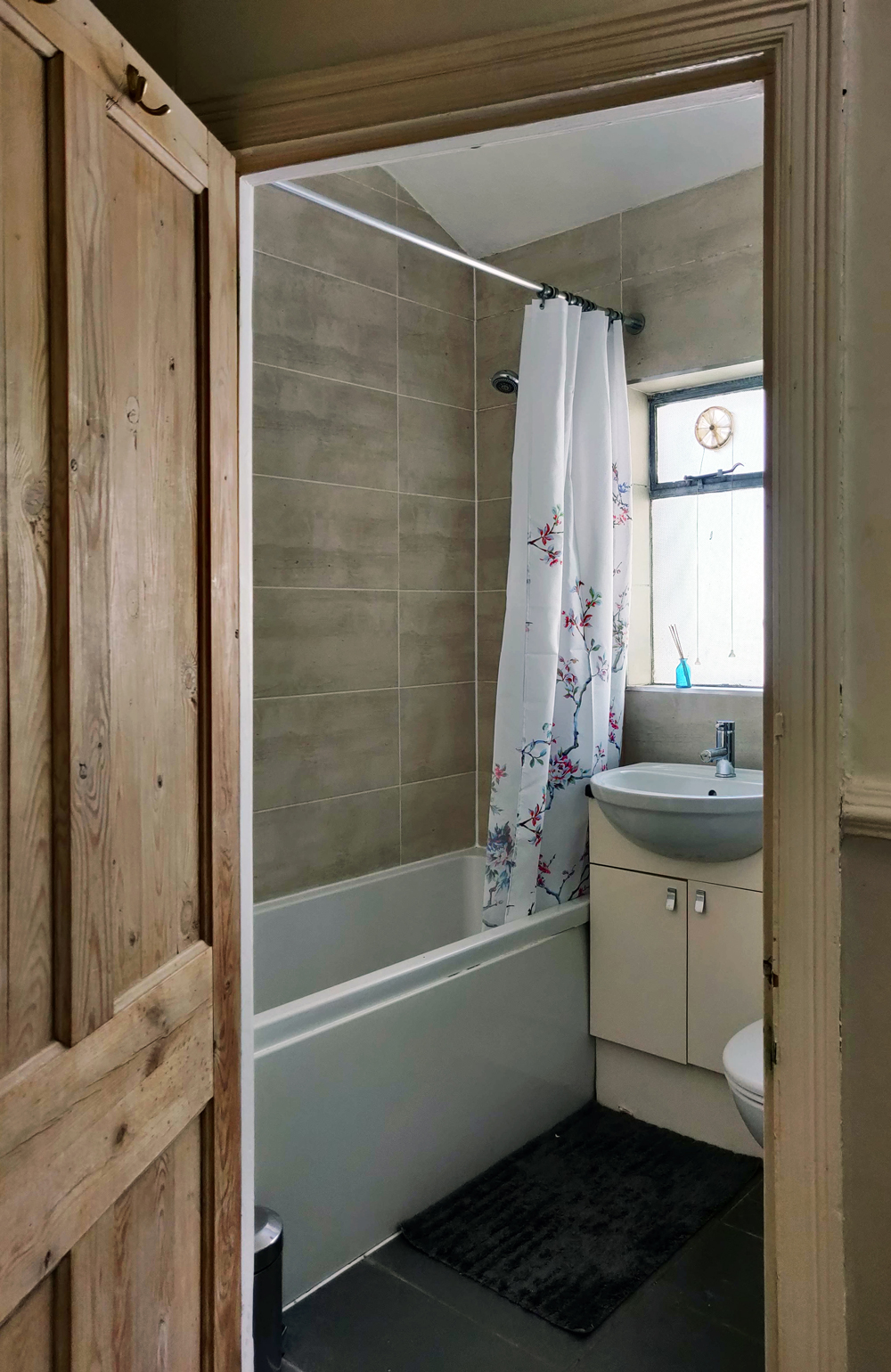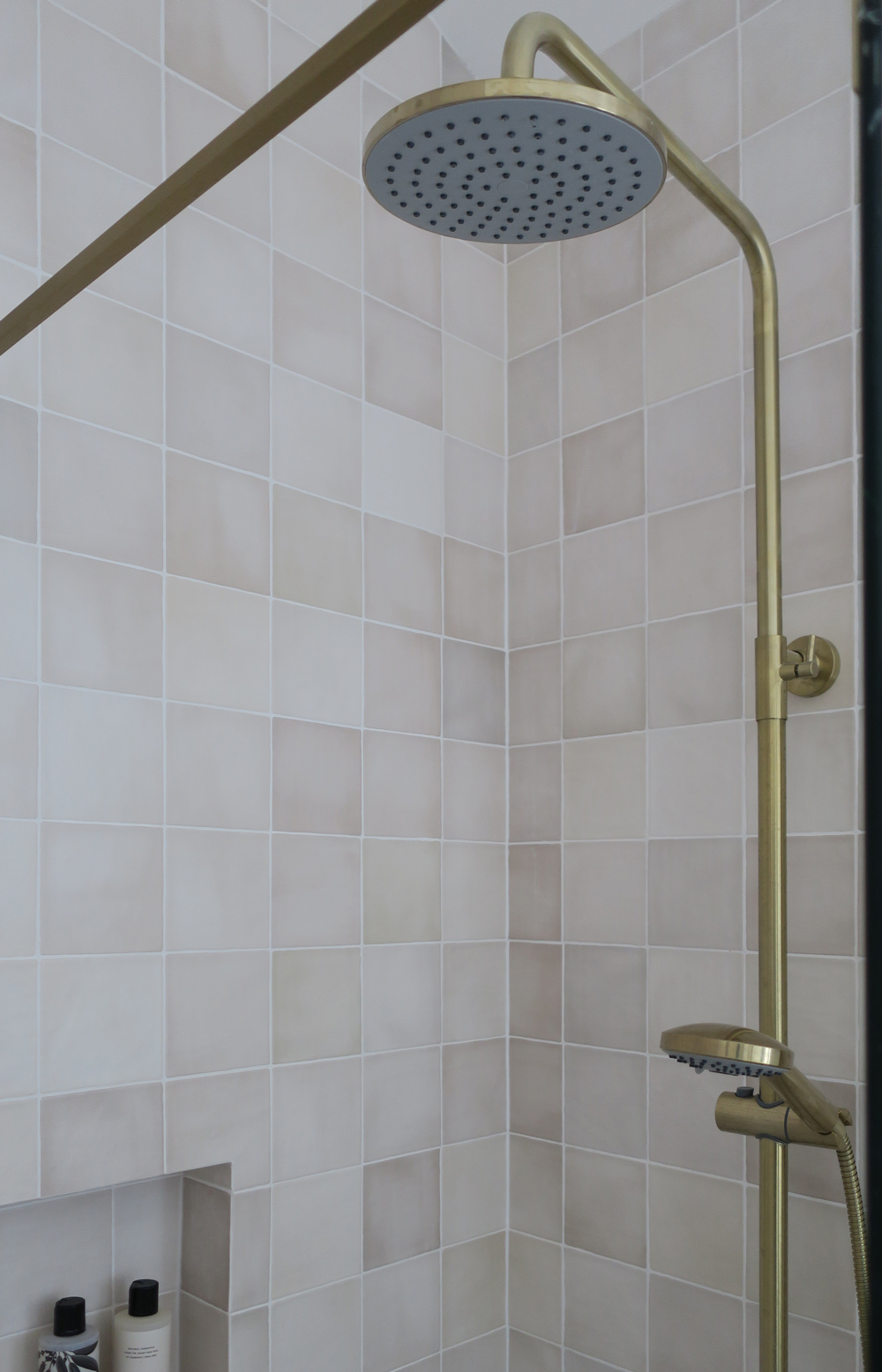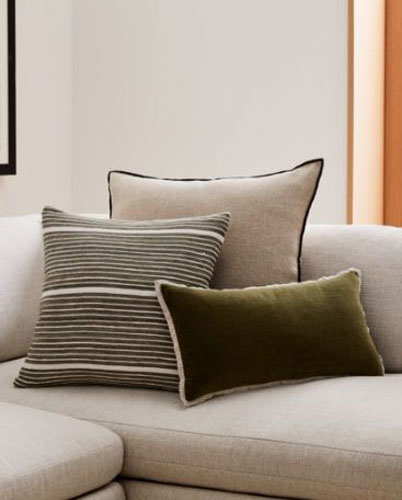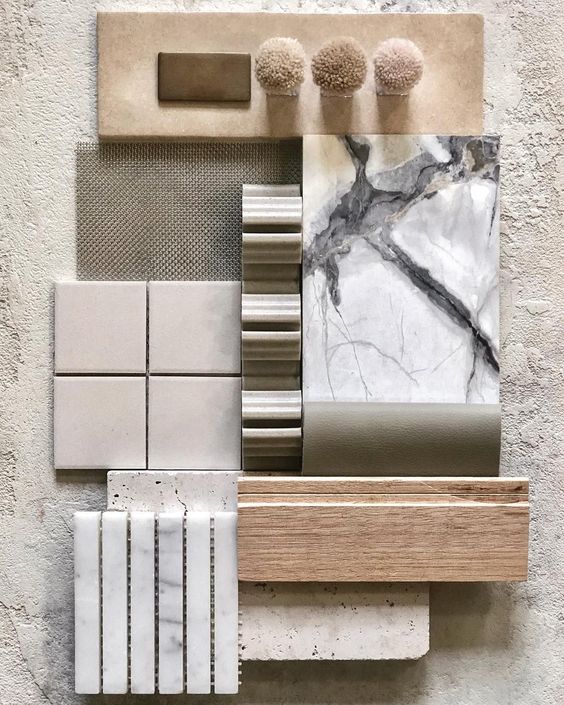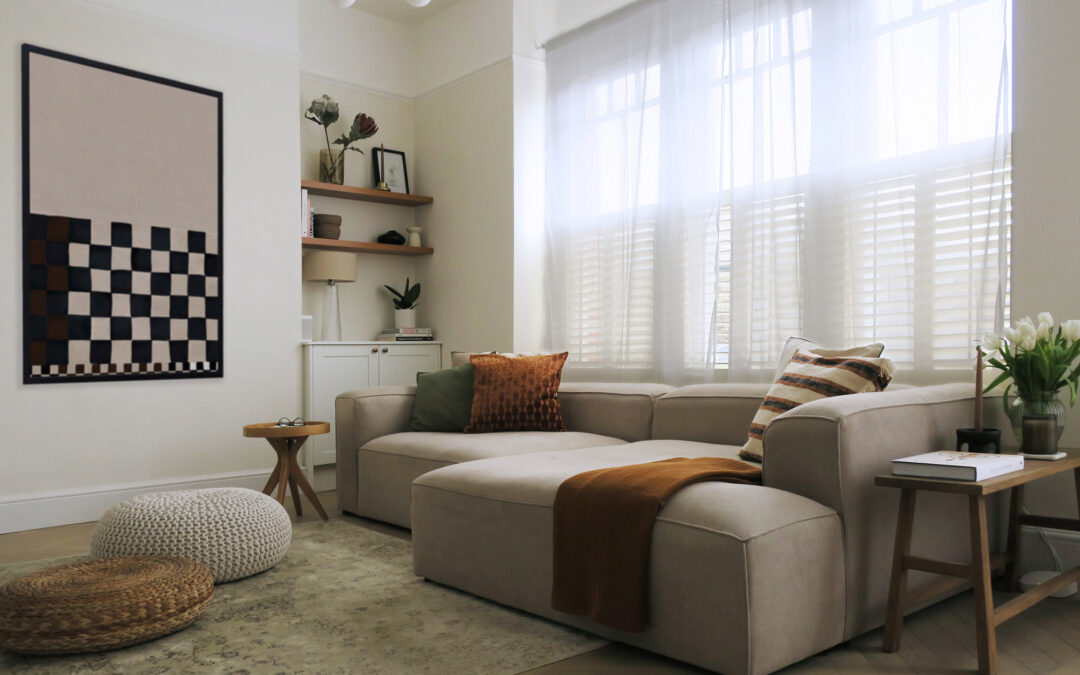
Renovation in Clapham Common
Renovation in Clapham Common
The North Street apartment is nestled in the heart of Clapham Common, in an area full of character and a strong community vibe. The maisonette flat is located on the first floor and originally consisted of three bedrooms, a compact living area, a large kitchen, and a very small bathroom.
Our client wanted to transform the space by reconfiguring it to suit their lifestyle while ensuring it would be appealing and practical for a future buyer. They wanted something stylish and high-quality but without sacrificing the functionality needed for everyday living.
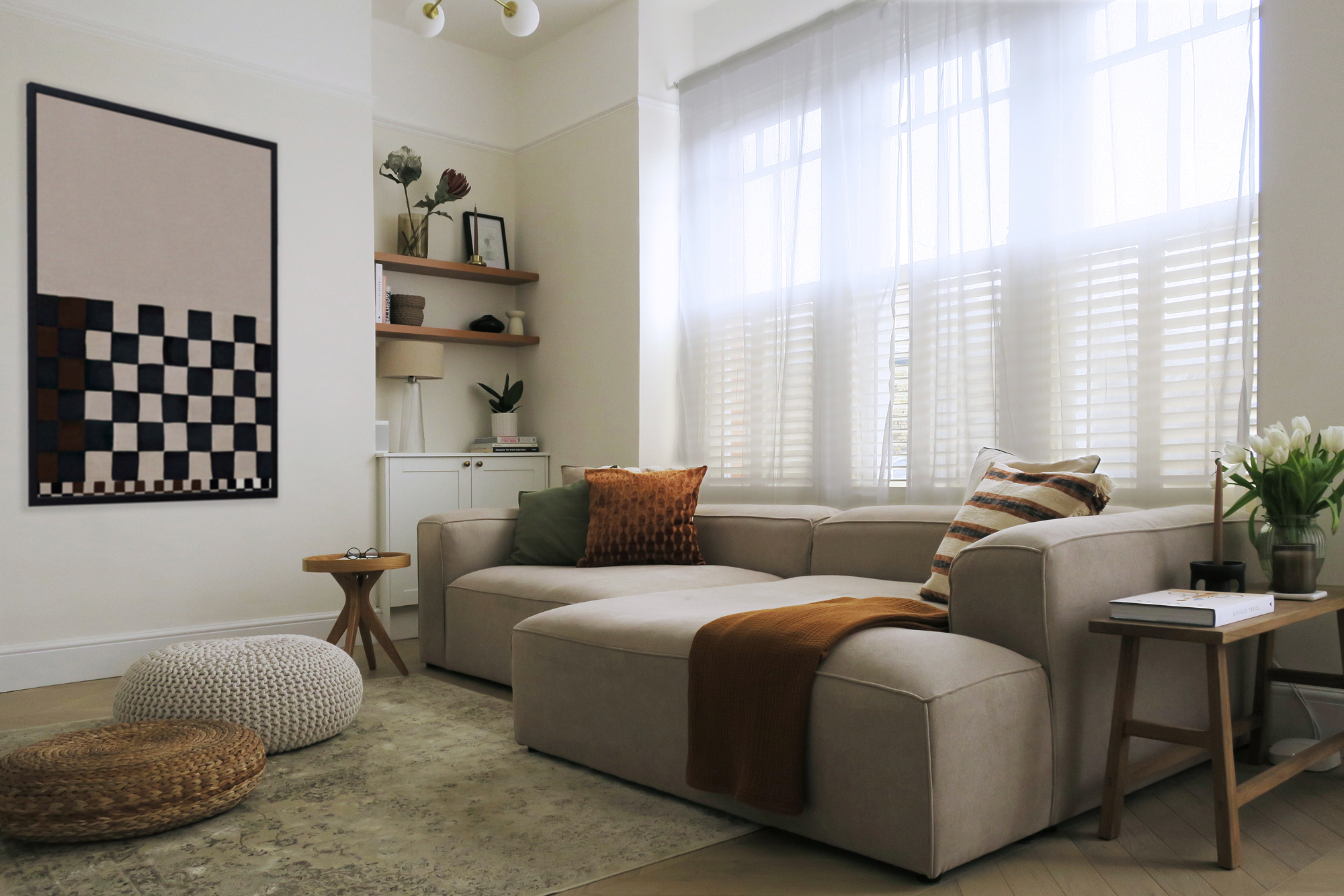
Scope of Work
The work on site took roughly 4 months and involved a complete renovation, including the demolition and refurbishment of all rooms within the property. The scope of work covered every aspect, from flooring and wall treatments to the kitchen, bathrooms, and joinery design, as well as lighting and furniture selections.
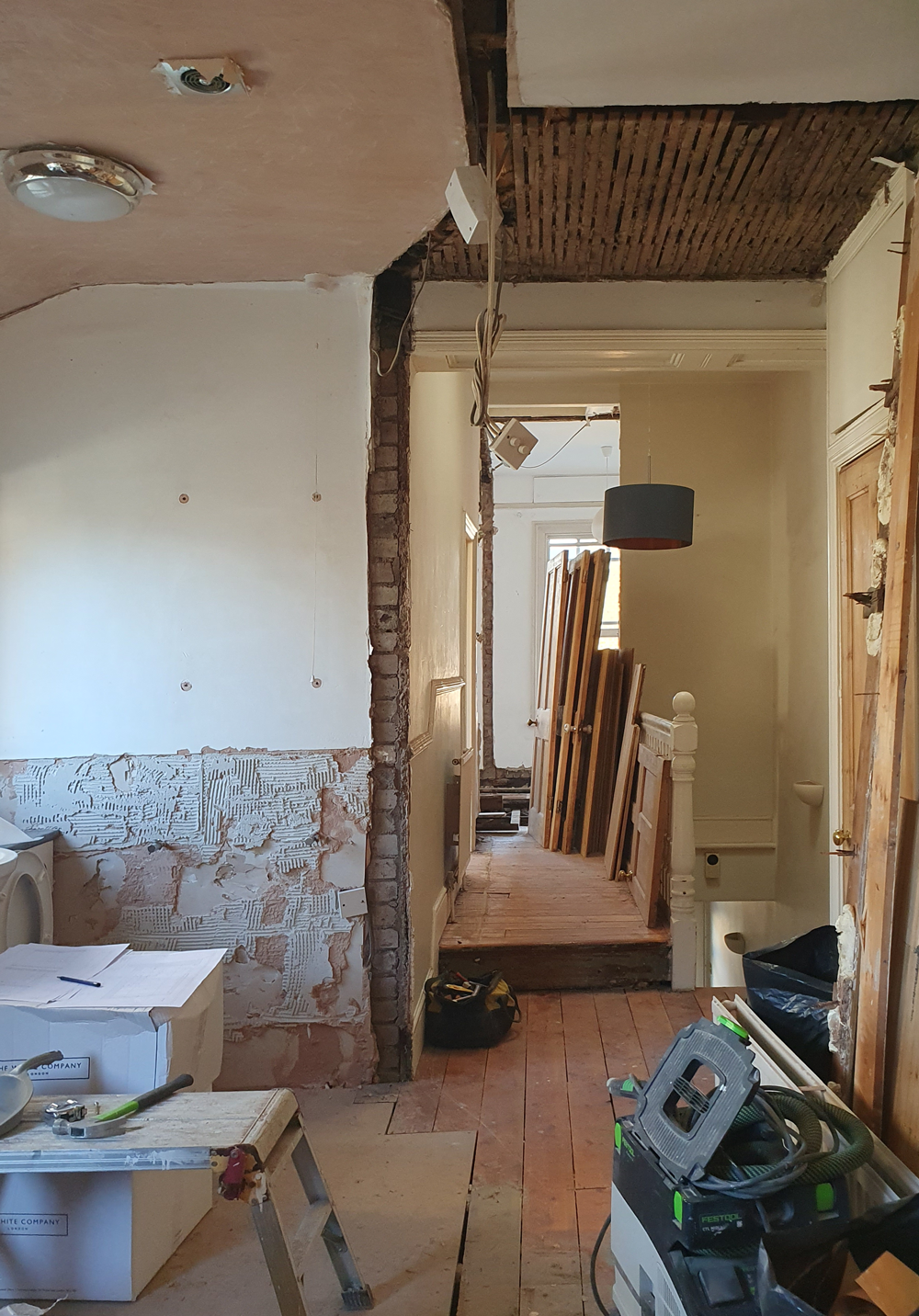
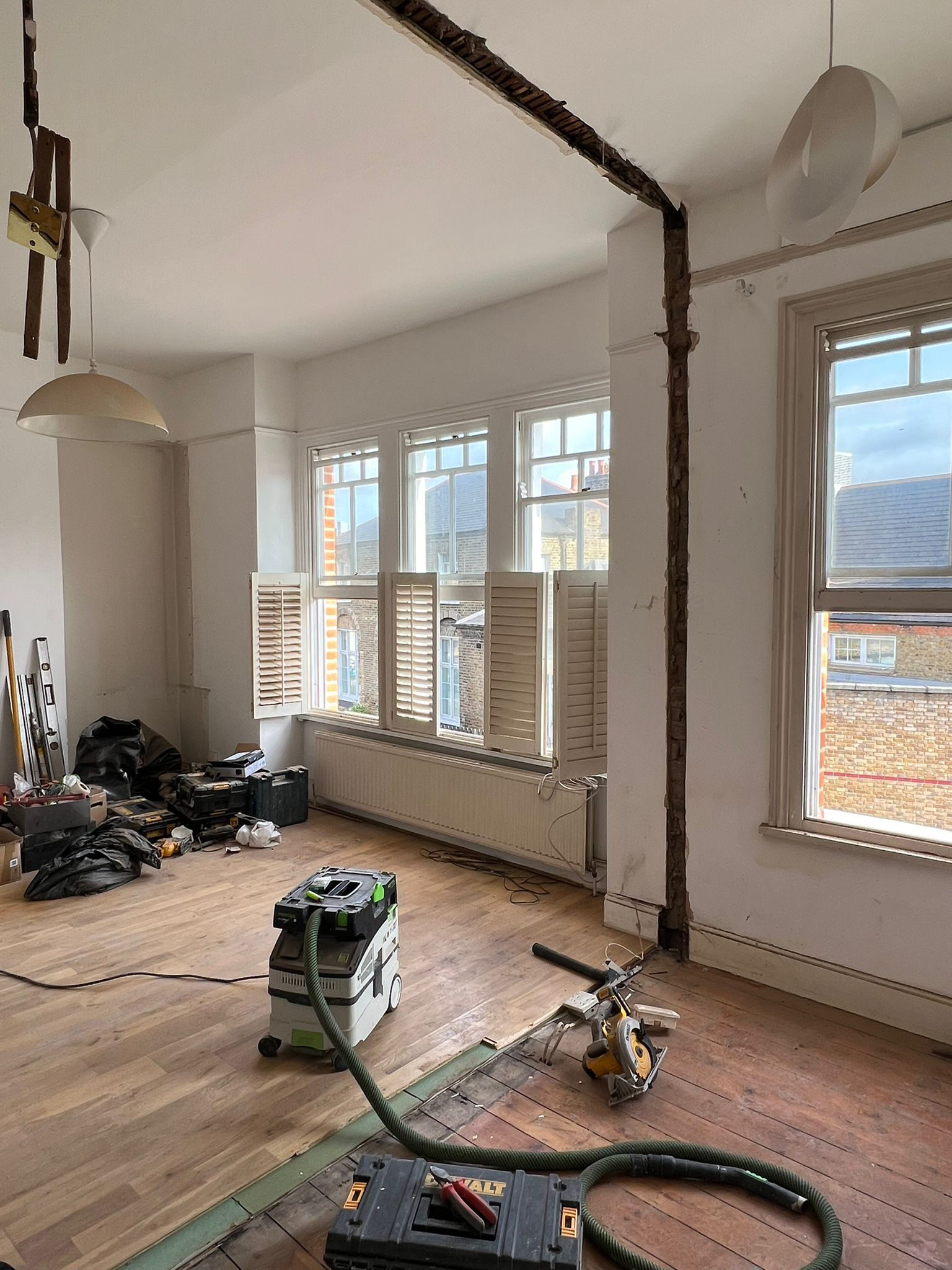
Space Design
The main consideration in designing this flat was how to re-organise the space to better serve the client’s daily needs. To achieve this, we opened up the living room by removing the wall between it and the adjacent studio, creating a spacious and light-filled reception room, leaving also space for a future loft conversion. By removing the door that separated it from the hallway, we allowed natural light to flow throughout the flat, enhancing the sense of space.
We also reduced the length of the kitchen to carve out extra space for an enlarged bathroom. The old hallway storage was completely demolished and replaced with a floor-to-ceiling, four-door custom cabinet, serving multiple purposes.

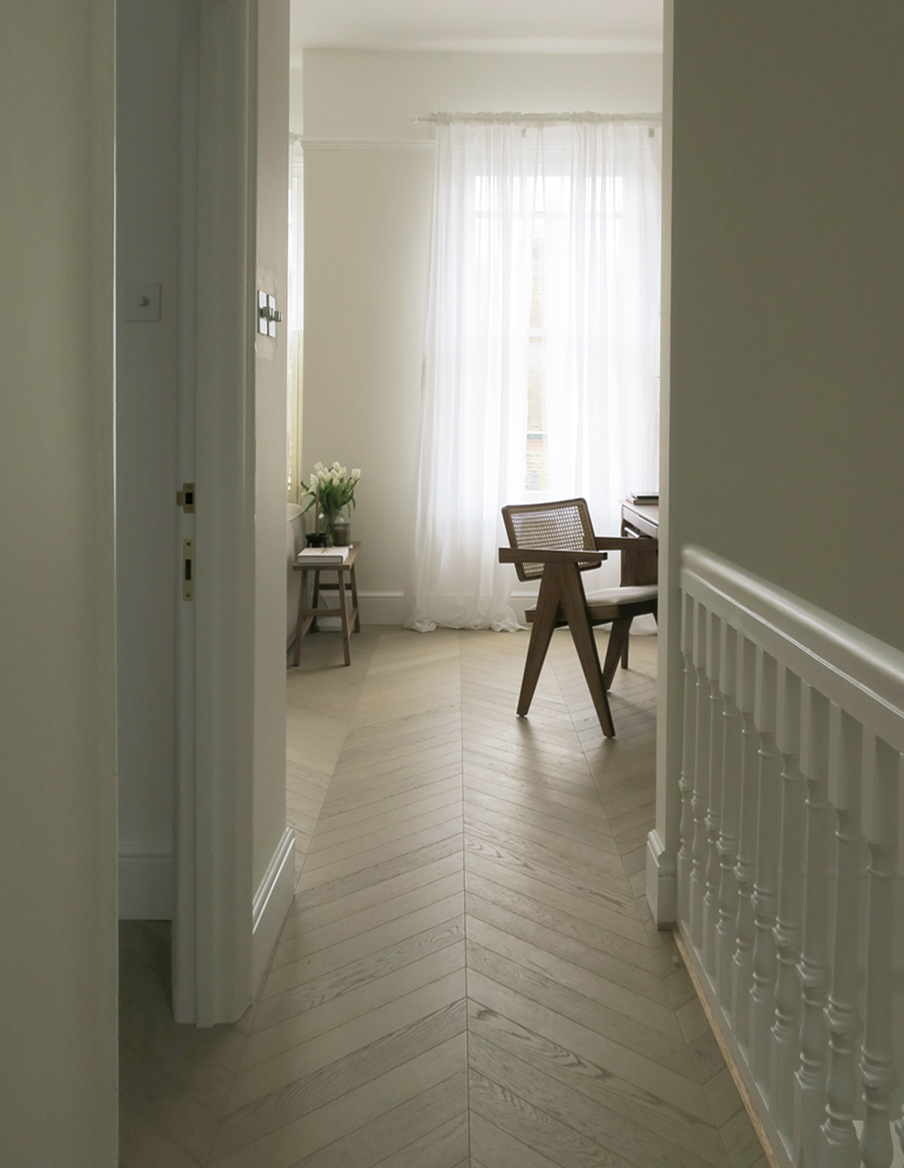
Materials
One key feature was the beautiful new wooden flooring, laid in a herringbone pattern throughout the entire apartment. This set the tone for the stylish and atmospheric design. We used warm oak for the flooring, and touches of oak were repeated throughout the scheme, from the kitchen to the custom shelving in the bedrooms.
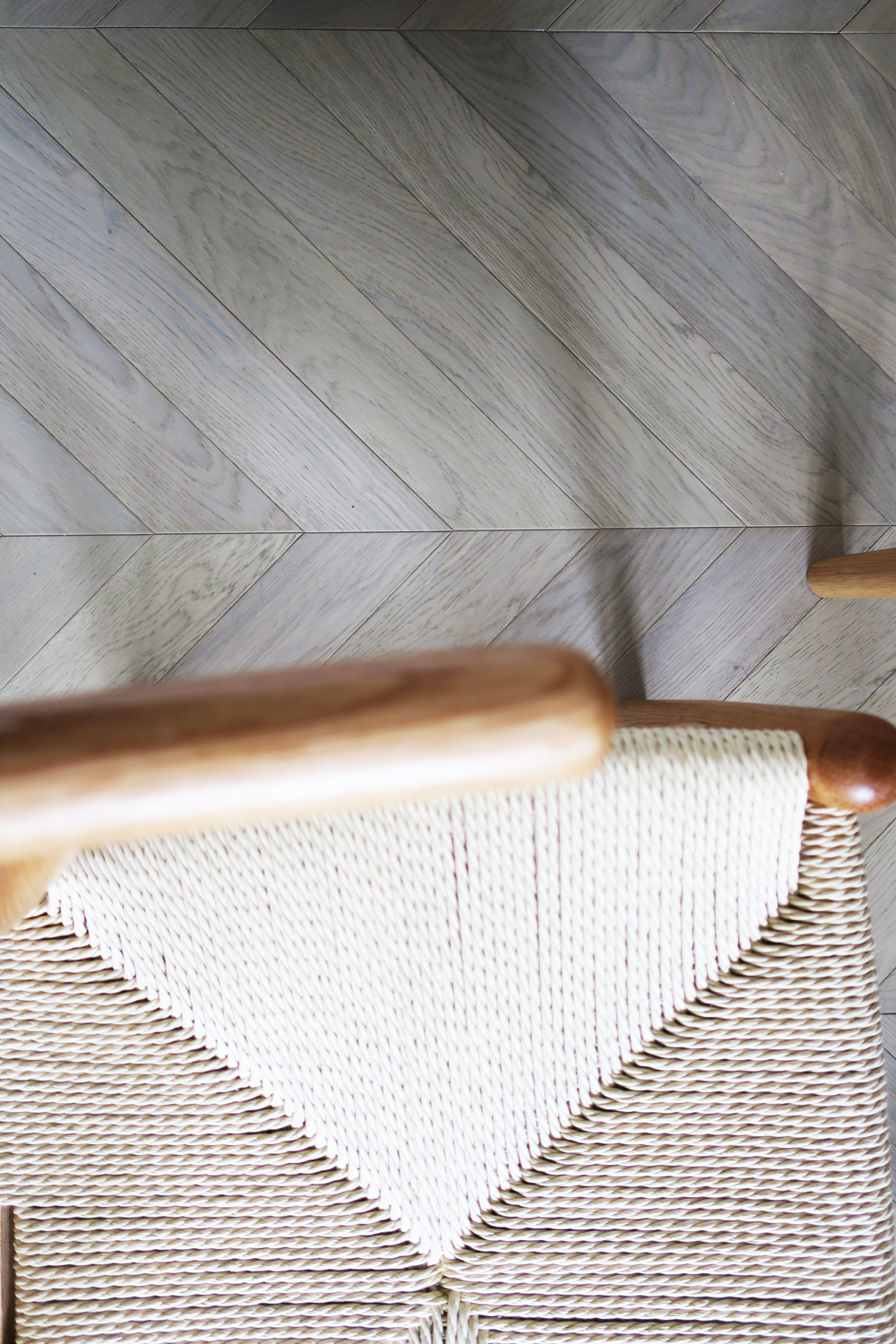
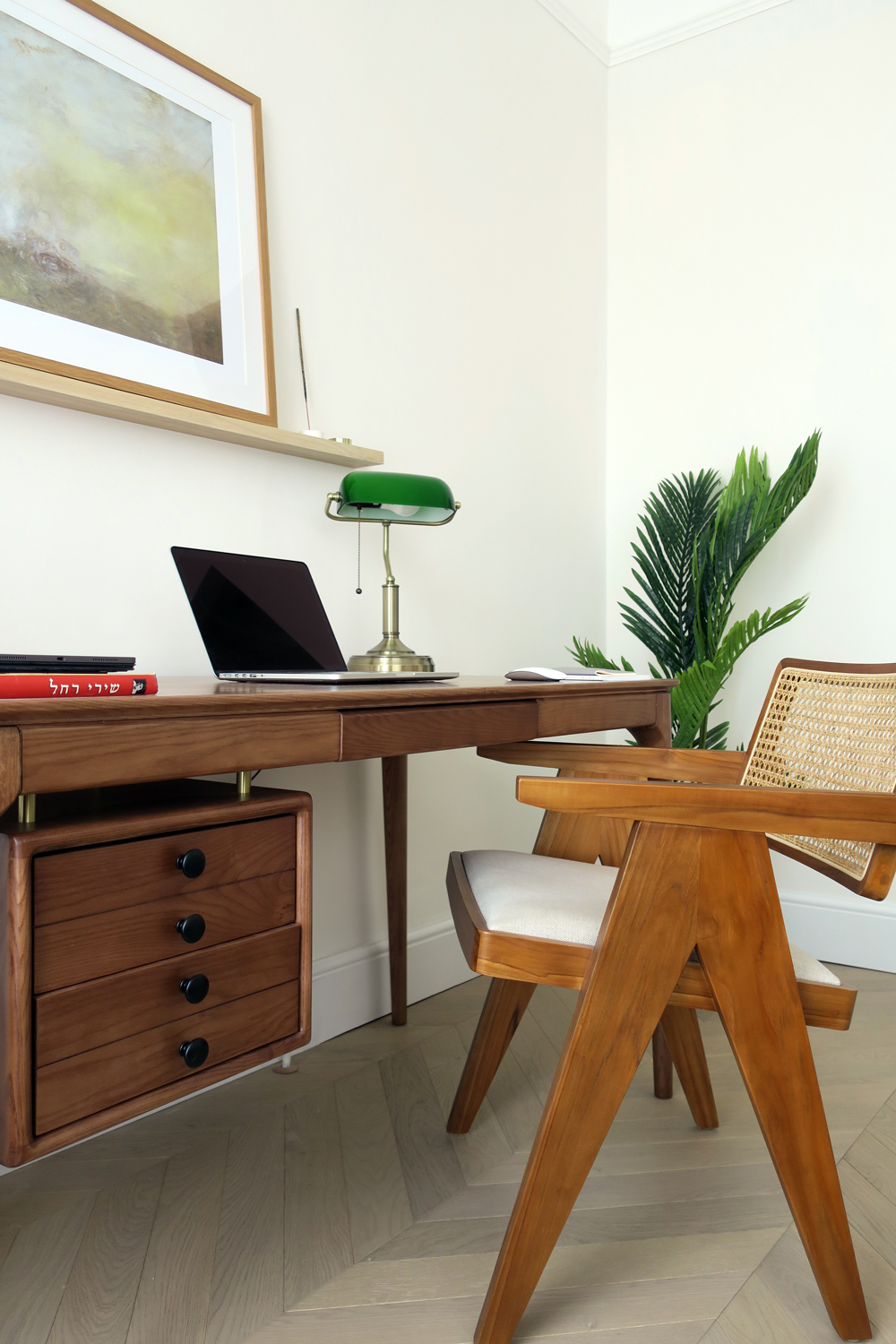
For the bathroom, we chose Claybrook tiles for both the floors and walls, incorporating three different textures and cuts to create a sense of zoning. The warm, neutral tones enhance the feeling of spaciousness, and the brass fixtures further elevate the overall aesthetic
